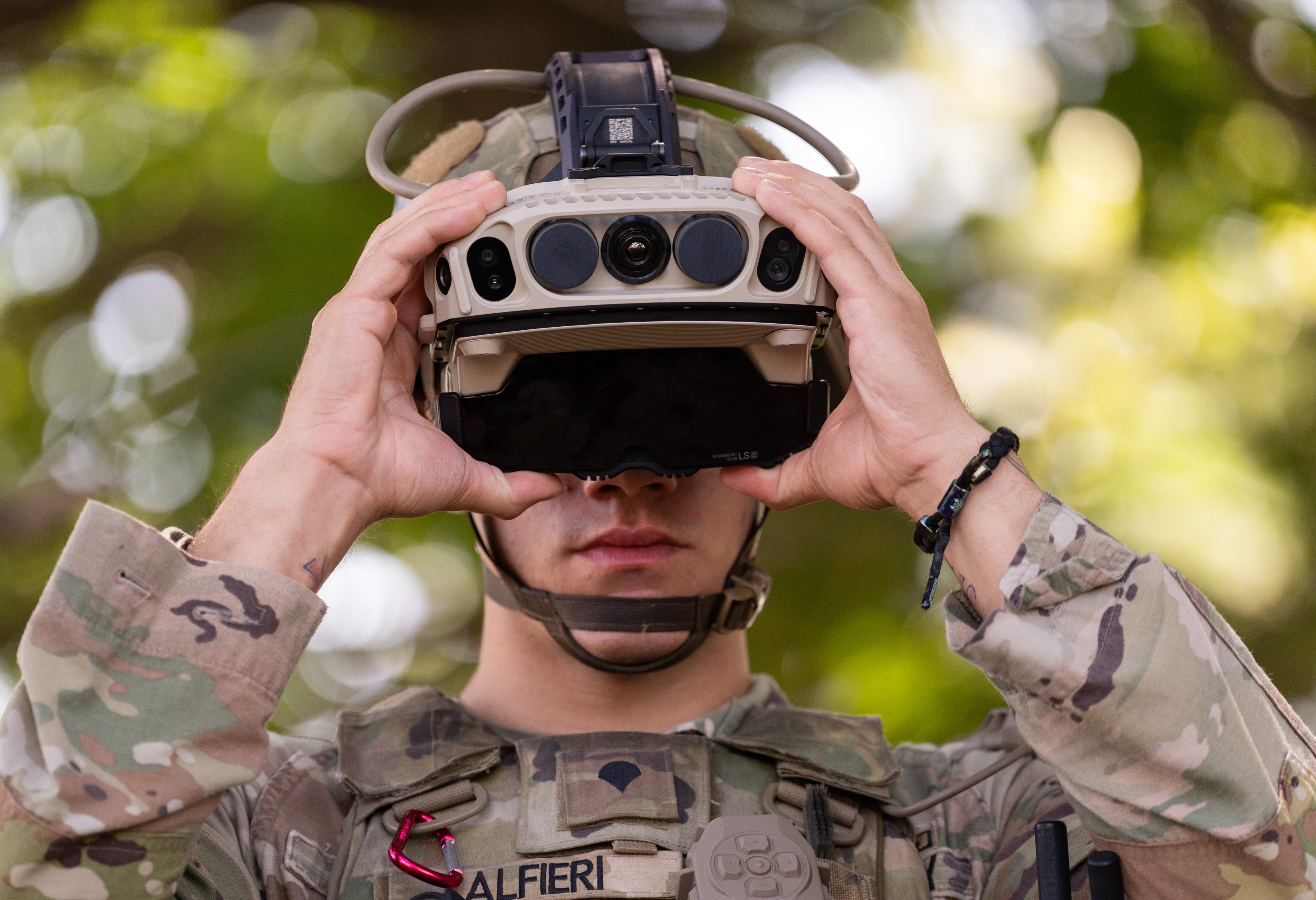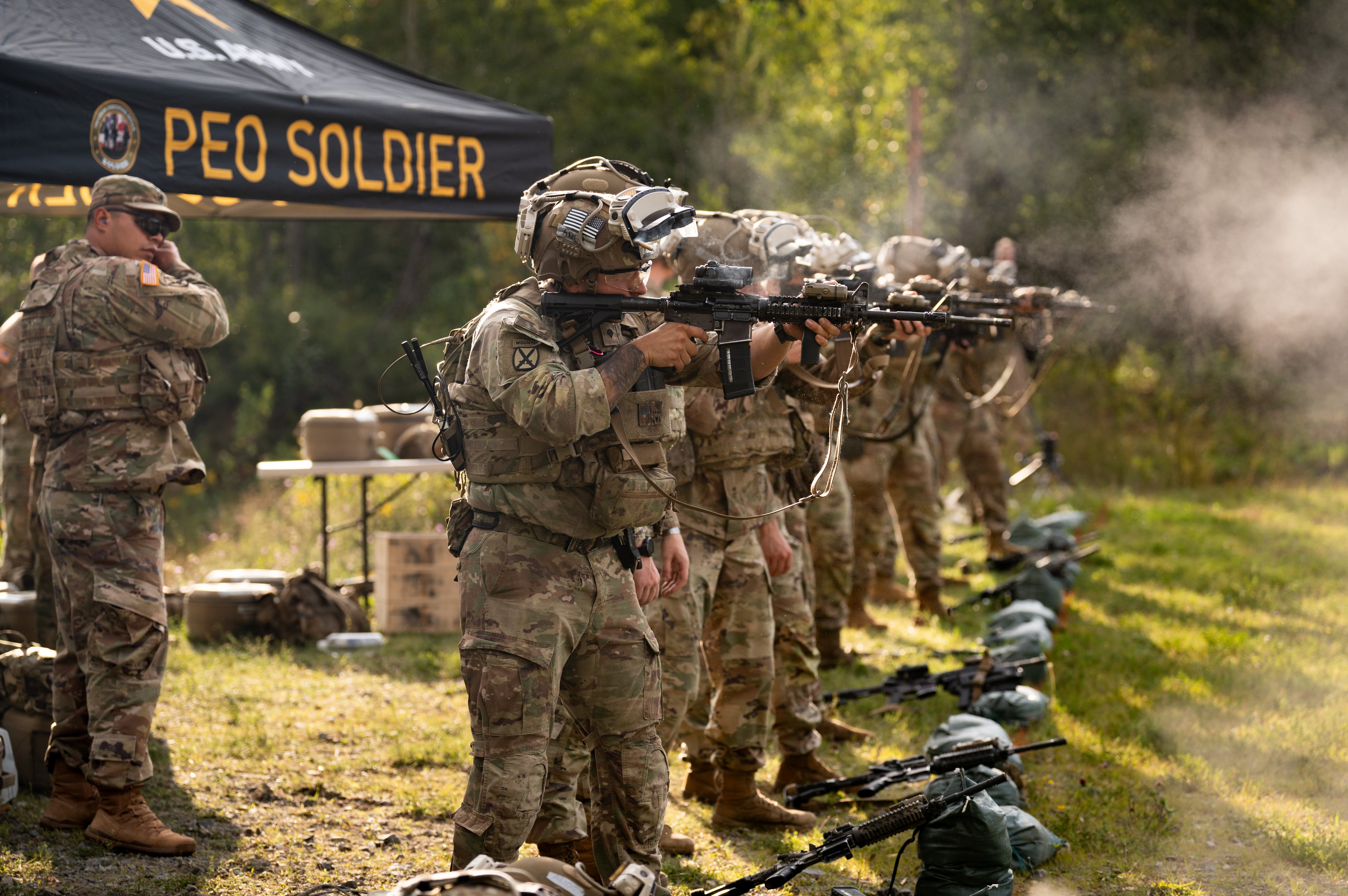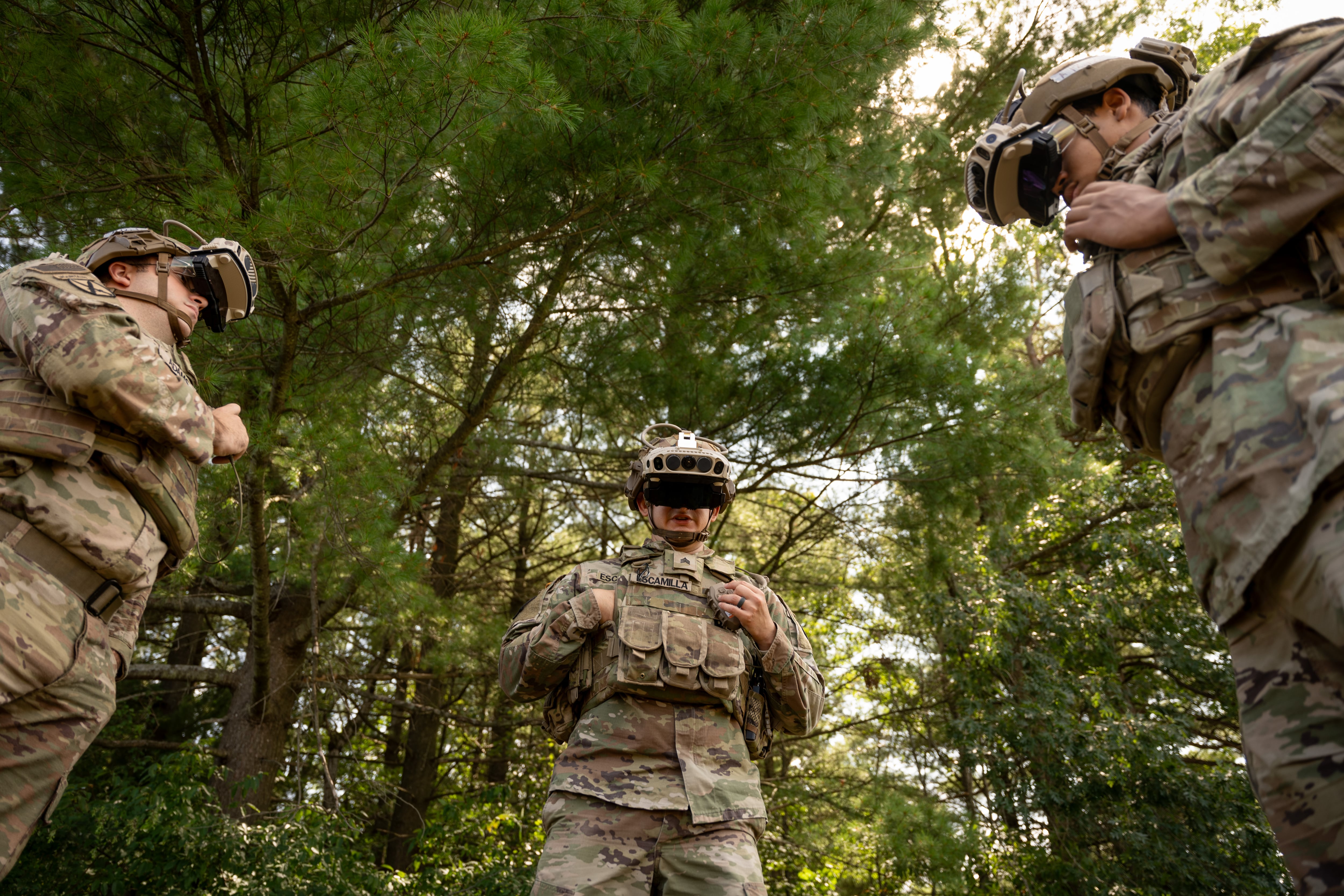FORT BELVOIR, Va. — The Army’s top civilian over acquisitions has approved the next phase of development for the service’s “do-it-all” device, the Integrated Visual Augmentation System.
The 1.2 prototype version of the device, an augmented reality combined night vision and situational awareness tool, was recently evaluated by soldiers with 1st Battalion, 87th Infantry Regiment, 1st Infantry Brigade Combat Team, 10th Mountain Division.
Program Executive Office-Soldier commander, Brig. Gen. Christopher Schneider, told Army Times on Tuesday that Assistant Secretary of the Army for Acquisition, Logistics and Technology approved phase II development for the device.
The $22 billion program hit some brief technology and funding hurdles in recent years but is back on track for the next steps. Those steps will include figuring out how to marry the device with tactical cloud computing. The cloud options can add a host of new tools and software to the gear. At the same time, Army leaders need serious scrutiny on how to build thousands of these sets quickly and affordably.
That’s something both PEO Soldier and Microsoft will need to figure out in developing tactical edge cloud computing support and a feasibility review of an affordable production plan to build and field the unprecedented technology.
If successful, production could begin by fiscal year 2025, officials said.
In January, the Army green-lit further development of version 1.2. Additionally, versions 1.0 and 1.1 were already developed and some have been procured. Those versions are going to units within Army Training and Doctrine Command for further evaluation, which will inform the development of the 1.2 and subsequent versions, Lt. Col. Denny Dresch told Army Times.

The August assessment included 20 prototypes used by soldiers to evaluate weapons compatibility, navigation tools and mission planning work, Dresch said.
“Now we have to make this system producible and affordable,” Schneider said.
The next phase will seek those solutions over the next 18 months, the one-star said. At the same time, the technical team will work with the cloud computing package to determine how many capabilities, and at what level, device users can access.
On the tech front that means working with a tactical cloud at the company level, which would alleviate network overload on the battalion or brigade, Schneider said. Another option would include reduced on-board capabilities within the squad or platoon.
Currently, a user can fly a microdrone over an area, capture imagery and within 20 minutes or so, create a map of the terrain the squad or platoon is preparing to assault.
Rather than an MRE-box sand table, a unit could virtually “see” the terrain in their heads-up display and rehearse a mission in their patrol base before leaving the wire, Schneider said.
The navigation, wayfinding, targeting and other features are standard with the device’s existing hardware. But future versions will have access to an applications “store” from which users can download a host of job-assisting apps.
The extra applications could be tailored to specific jobs, duties or missions, he said.
“We can get input, it’s easy to build an app to deliver to the soldier something they want to do,” Schneider said.
He said the cloud portion work would occur over the next year.

Some examples could include setting sectors of fire, first aid instruction, targeting assistance for grenadiers, terrain map construction and others, Schneider said.
The devices were delivered months ahead of the previous schedule from Microsoft, the creator of the original platform for the device, the Microsoft HoloLens.
The subsequent 10th Mountain Division evaluation provided feedback for the form, fit and functionality of the device that contributed to the phase II approval, officials said.
Original plans foresaw the device fielding to units this year, but as developers pushed the boundaries of night vision technology, they ran into field of view distortion problems. Current advanced night vision technology relies heavily on analog methods.
Those methods provide clearer vision but don’t allow for augmented reality overlay and other visual features needed to make the device work as the situational awareness tool that the Army envisions.
Along with the tech challenges, early prototypes were more cumbersome, with cabling, positioning and weight problems.
Since last November, Schneider said, when Microsoft provided major software upgrades, new low light sensor technology was adopted, along with new form factor changes that include: a hinge-like flip-up helmet mount instead of the strap-on goggle, a counterweighted battery on the back of the helmet and options to mount the controller along the user’s rib cage instead of on the chest and streamlined cabling to avoid entanglement.
Todd South has written about crime, courts, government and the military for multiple publications since 2004 and was named a 2014 Pulitzer finalist for a co-written project on witness intimidation. Todd is a Marine veteran of the Iraq War.





